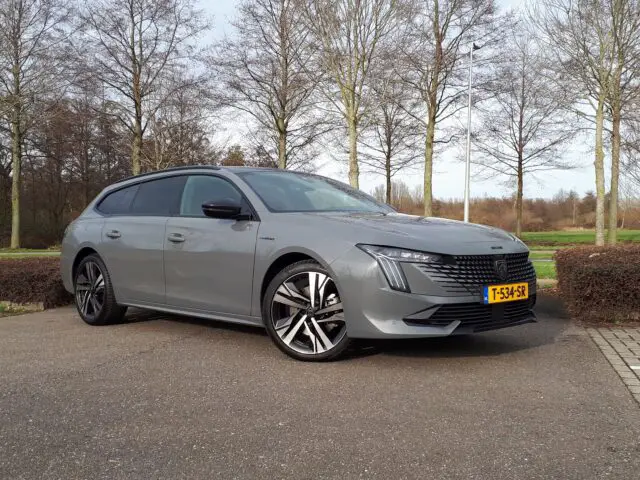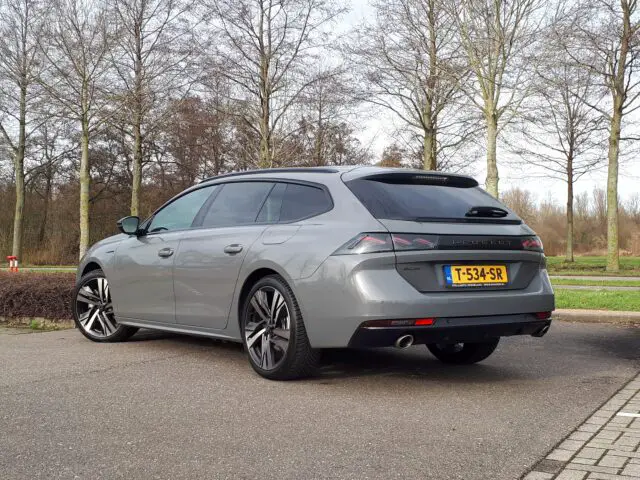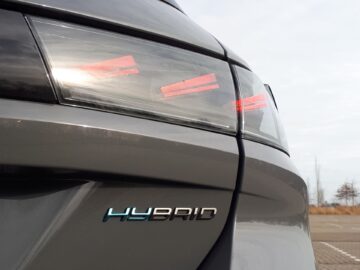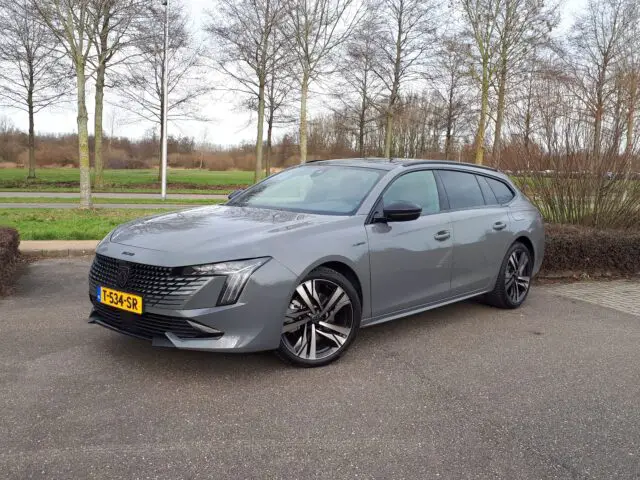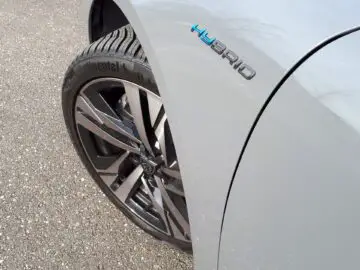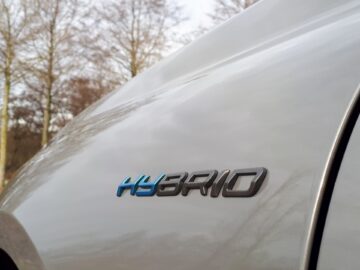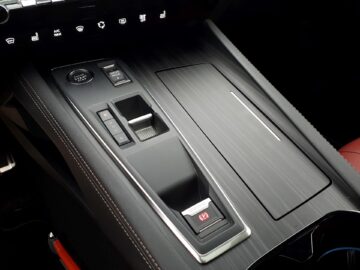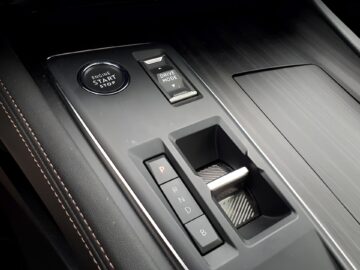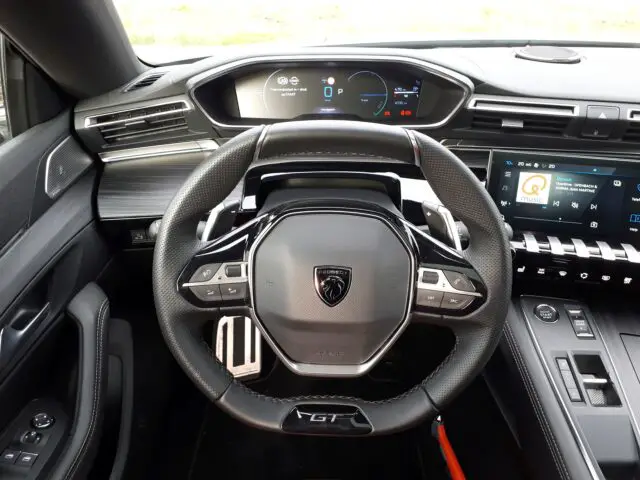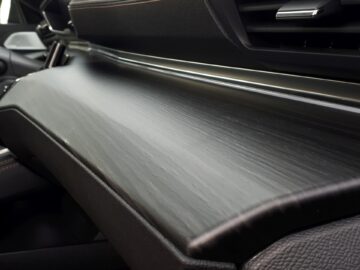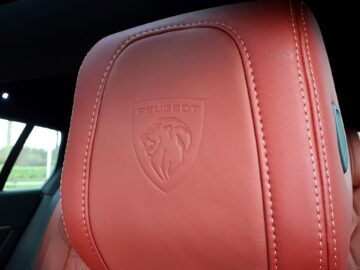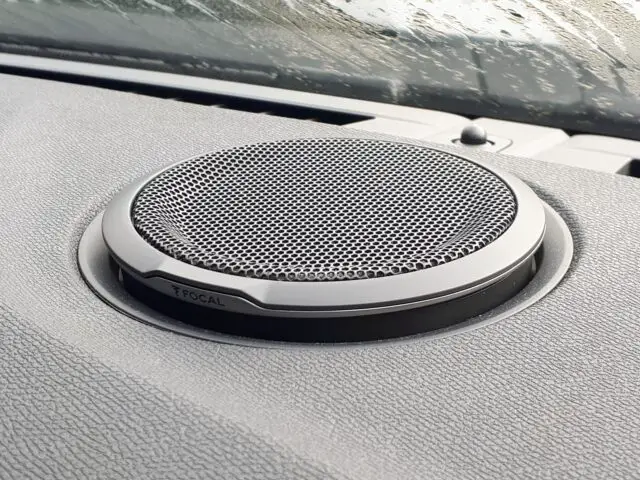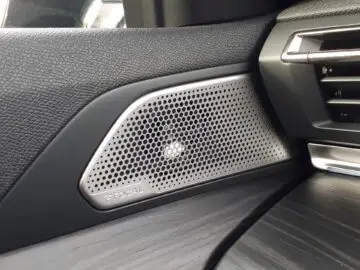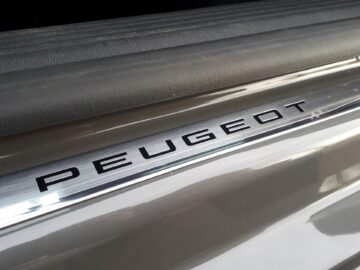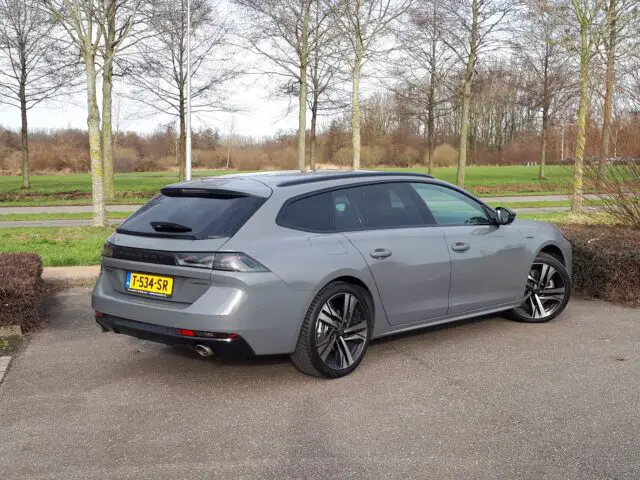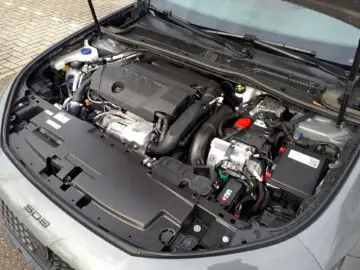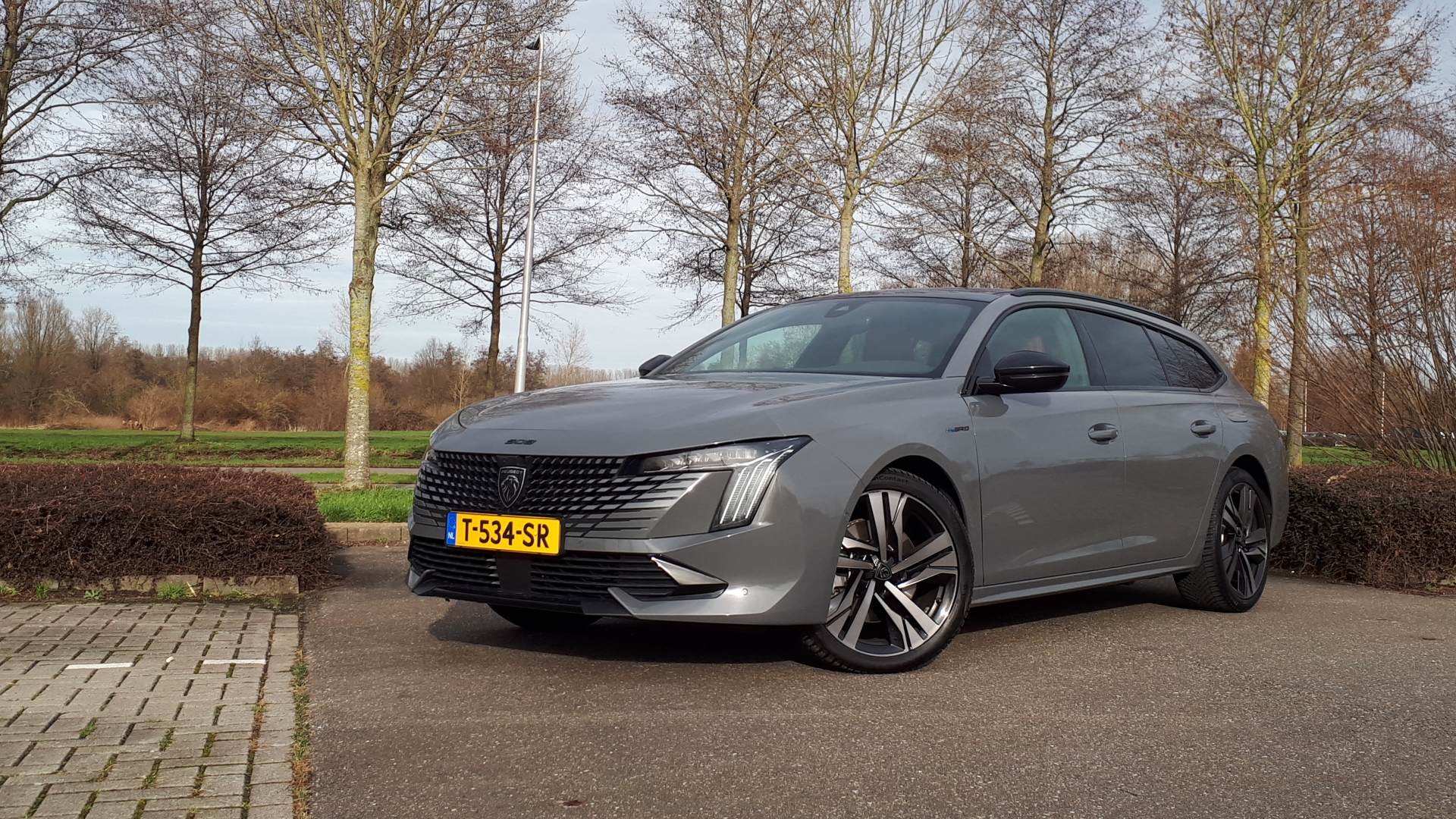Review – Peugeot 508 SW Hybrid 225 (2024)
1. The Peugeot 508 is spacious
With the current popularity of SUV models, you would almost forget that a station wagon is also an excellent choice as a spacious family car. In the back of the Peugeot 508 SW fits 530 liters of luggage, or even 1,780 liters with the rear seats folded down. Also nice: if you choose the plug-in hybrid, the battery does not come at the expense of luggage space. All liters remain available. Only point of improvement: there is not really room for the charging cable. It should be loose or under the cargo floor. The latter is again inconvenient if you have luggage.
There is also plenty of room in the back seat. With a height of 1.80 m (and the front seat in a good position for us), we sit in the back just fine “behind ourselves. Headroom in the rear is also adequate, which is something we see differently even in SUV(-like) models. Something to keep in mind though: on the sides, the roof does extend quite far down, so pay attention to your head when getting in and out.
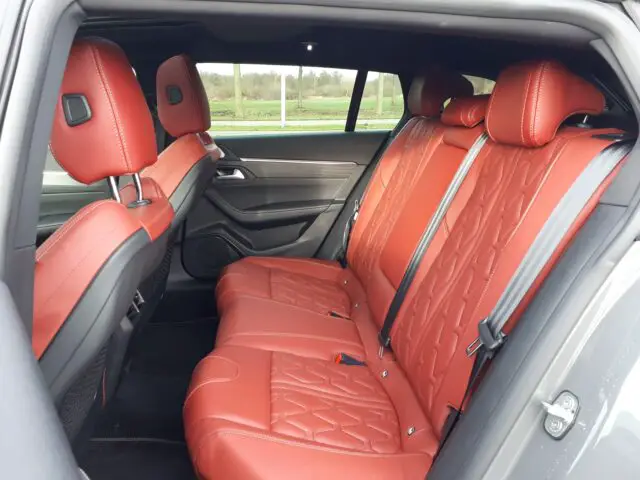

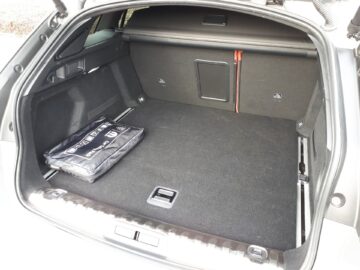
2. The Peugeot 508 offers plenty of choice
The Peugeot 508 offers a lot of choice in trim levels. The standard engine is a 1.2-liter three-cylinder gasoline engine with 96 kW (130 hp), and there is also a choice of no fewer than three plug-in hybrid versions: one with 132 kW (180 hp), one with 165 kW (225 hp) and one with 265 kW (360 hp). The latter is reserved for the Peugeot Sport Engineered version, better known as the PSE, a serious sports version.
There are also three trim levels to choose from: the Allure, the GT and the aforementioned PSE. Standard GT trim already offers rich equipment, including matrix LED headlights, a high-positioned digital instrument cluster (which eliminates the need for a head-up display) and several advanced assistance and safety systems. The GT extends that especially with leather upholstery and a slightly more luxurious trim of the ex- and interior. In addition to sporty equipment such as an active suspension, the PSE offers extras in the form of a Hi-Fi Premium Focal audio system and even a night-vision camera. Of course, some of the aforementioned equipment is also available as an option for the lower trim levels.
The night vision function works well. It clearly distinguishes pedestrians and cyclists from other roadside objects and warns of them when necessary. This is sometimes a bit premature: we also sometimes received a warning for a cyclist who was just riding safely on the other side of the road. Another point for improvement is that the lane assist intervenes a bit very quickly with a steering correction.
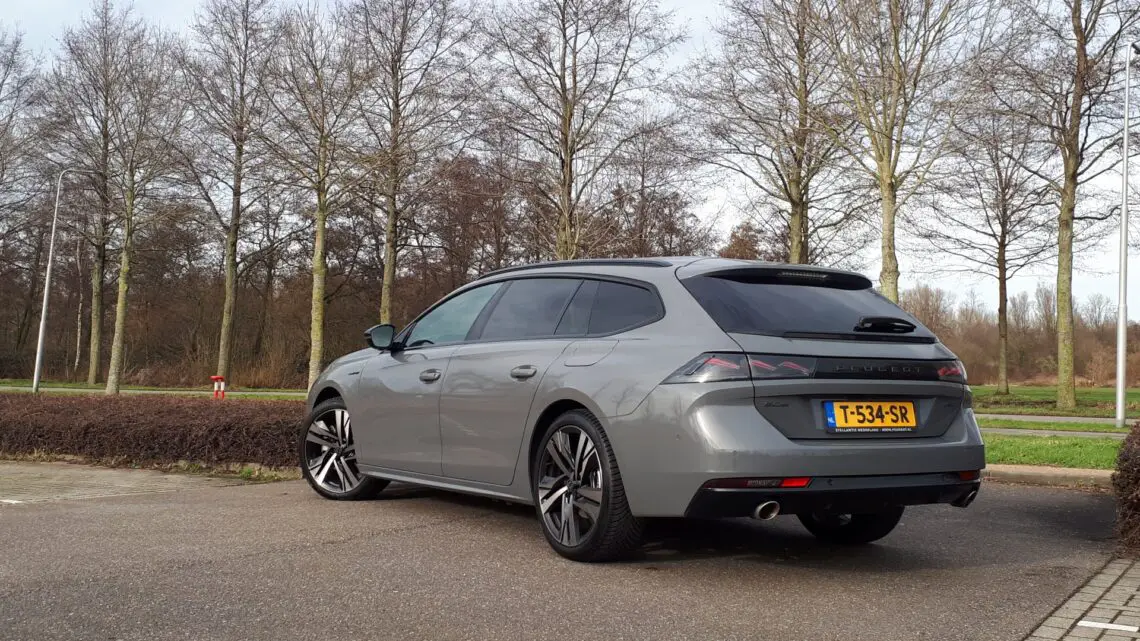
3. The Peugeot 508 drives fine
In general, Peugeot’s models offer fine handling, and the Peugeot 508 is no exception. The seating comfort is good and the car’s suspension is very comfortable. Short bumps in the road surface are noticeable, but not to a disturbing degree. We drove the HYbrid 225 trim, the most powerful plug-in hybrid after the sporty PSE trim. The full 165 kW (225 hp) of power is only available with enough energy in the battery, but even with the battery empty, it still feels fast and powerful. The gasoline engine then delivers 133 kW (180 hp). Besides having the extra power available, the 508 does drive a little smoother with a full battery. In fact, the electric drive manages to mask shifting moments nicely. The battery is never completely flat, so that you can always drive away from a standstill with electrical assistance.
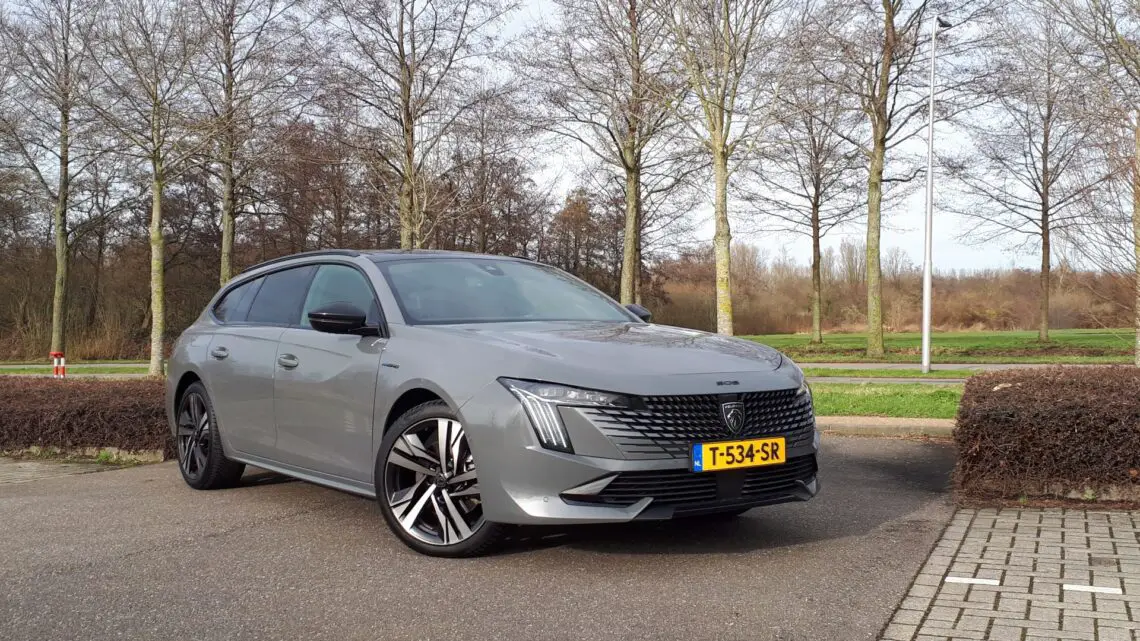
4. The Peugeot 508 is economical
Depending on body and engine variant, the gasoline models of the Peugeot 508 have an official average consumption of 5.8 to 6.0 l/100 km (roughly 1 on 17). Consumption for the plug-in hybrid models is 1.1 to 1.2 l/100 km (over 1 in 80), or 1.8 l/100 km (1 in 55) for the sporty PSE version. Depending on the version, the all-electric range of the plug-ins is about 60 km. Of course, these WLTP values fall or stand on how you use the car. For example, do you have an (un)economical driving style or do you charge the plug-in hybrid’s battery neatly?
We unfortunately did not always have the opportunity to neatly charge our HYbrid 225. We also made quite a few (highway) trips that were well beyond the electric range. Even so, with a leisurely driving style, we were still able to drive almost 40 kilometers electrically on the highway. We ended up with an average practical consumption of 6.1 l/100 km (over 1 in 16). So that is comparable to the theoretical values of non-hybrids. Still, within the circumstances (lots of highway driving, little charging) we don’t think it’s a bad score.

5. The Peugeot 508 looks good
This last point is of course completely subjective, but as far as we are concerned, the design is also a reason to consider the Peugeot 508. The facelift did not change that. It is perhaps the most beautiful Peugeot you can buy right now. Moreover, it sets you apart in a mass of SUV-like models these days.
